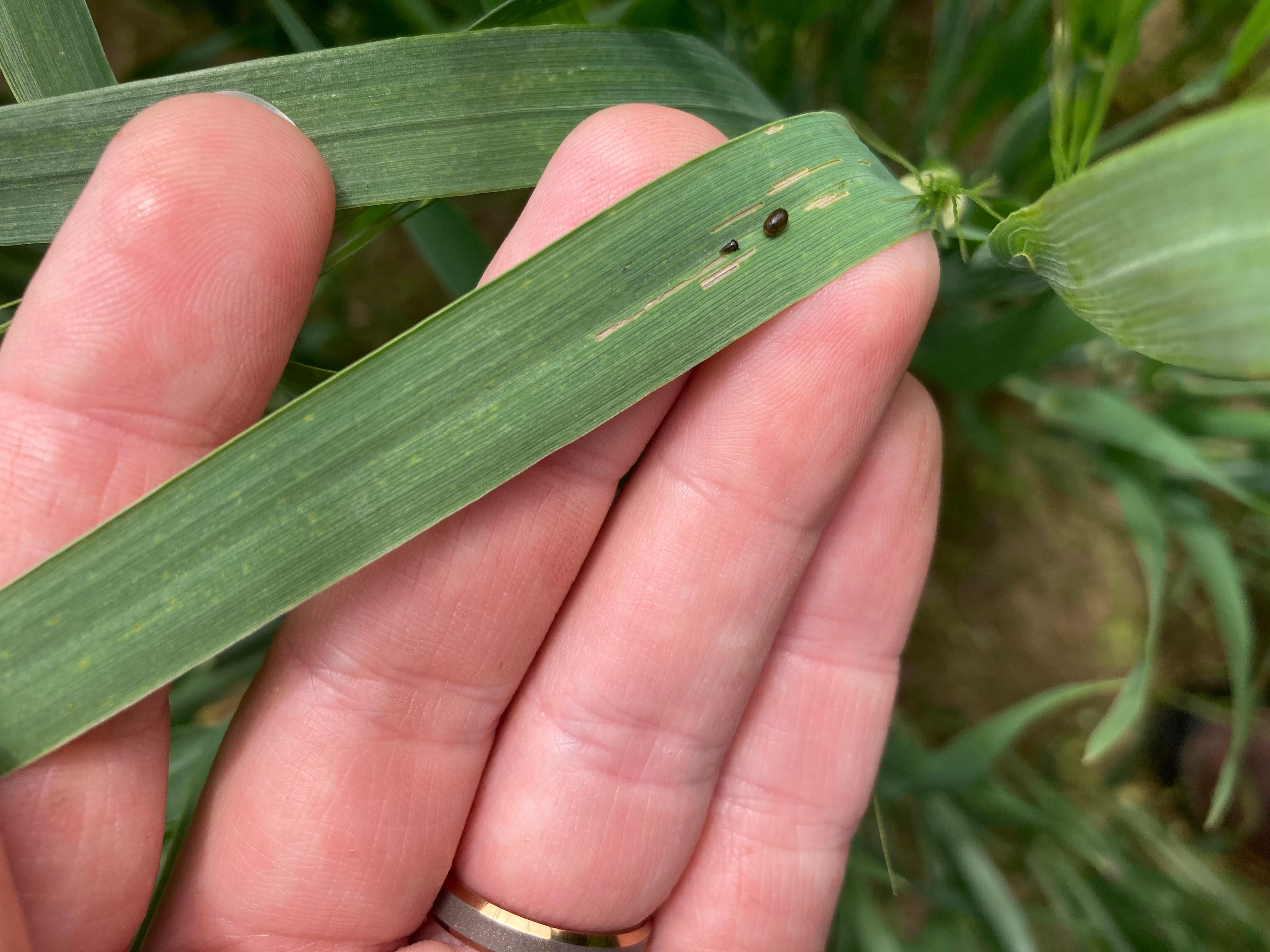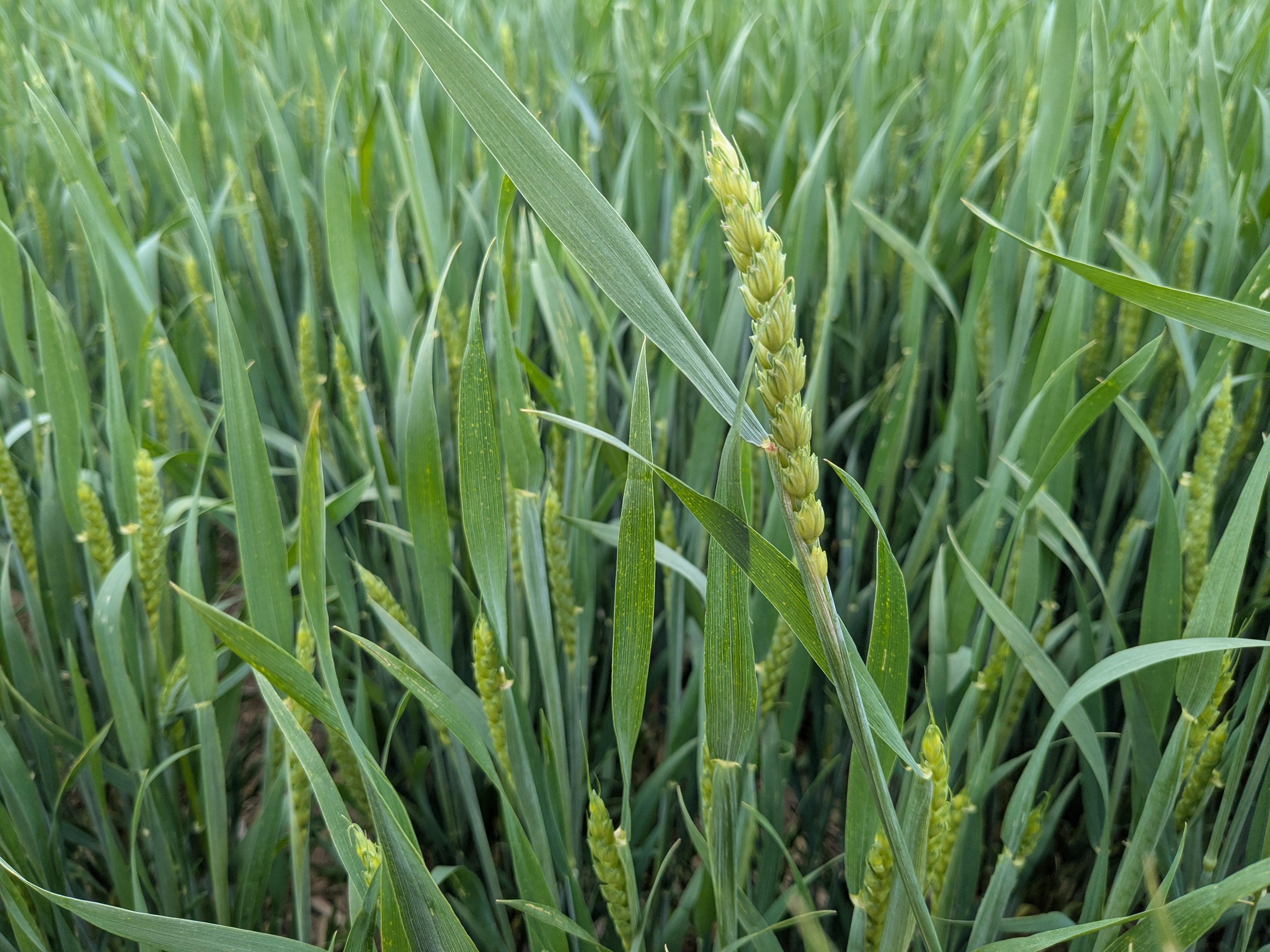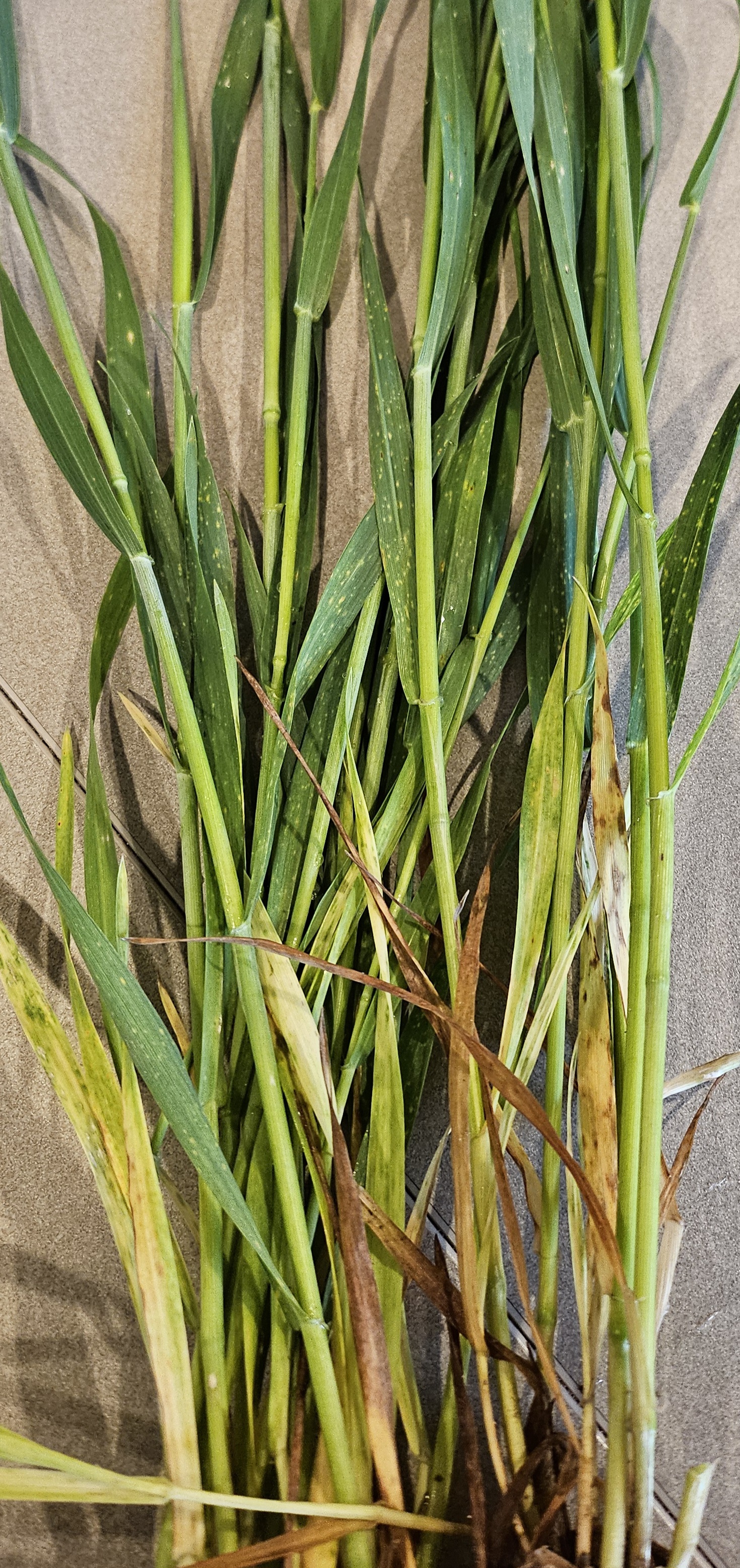Wheat Watchers Week of May 19, 2025
See how the wheat crop is progressing across the state this week.

Enjoy this installment of Wheat Watchers! This report will come out weekly until most of the state hits flower and then will switch to bi-weekly until most of the state has harvested. This report is only possible because of our agribusiness and farmers who participate as wheat watchers. If you are interested in being a wheat watcher, especially if you see your area isn’t represented, please reach out to Michigan State University Extension field crops educator Jenna Falor at falorjen@msu.edu.
Overall, this week reporters are seeing wheat stands in good condition ranging in Feekes growth stage 7-10.5. Wheat crops are looking to be in excellent condition.
Southwest region
We had three wheat watchers reporting from the southwest region: one from Barry County near Hickory Corners, one from St. Joseph County near Centreville and one from Allegan County near Wayland. The watcher in St. Joseph County reports wheat is at Feekes 10.3-10.5.1. They are seeing some late flag leaf and early head fungicides going out, but the bulk will come soon. The watcher in Barry County reports wheat is at Feekes 10.1-10.5 and some diseases like powdery mildew, tans spot and leaf streak mosaic virus are visible. The watcher in Allegan County is reporting Feekes 9-10.5.
The watchers in Allegan and St. Joseph counties are seeing some aphids and cereal leaf beetles but at low quantities. The watcher near Centreville says the weather has been cold and wet, so there has been prolonged leaf wetness. The watcher in Allegan County reports the storms last week had high winds and lodged some forages, triticale and rye but that wheat did not see much lodging.


Southeast region
We had one wheat watcher reporting from Jackson County near Jackson, and they are reporting Feekes 10.1-10.3. Growers are waiting for heads to emerge for fungicide applications. There is some spread of powdery mildew and some septoria leaf spot, as well as some thistle in fields that did not receive a herbicide application this spring.
East central (Thumb) region
We had two wheat watchers reporting from the Thumb in Huron County: one near Ubly and one near Elkton. Wheat is at Feekes 8-9. Overall, wheat looks good. Weeds are dying from spring herbicide applications, though a little slower than most years because of the cooler temperatures we have had. There is some light disease pressure, including wheat streak mosaic virus, spindle streak virus and some septoria leaf spot.
Central region
We had two wheat watchers reporting from the central region in Saginaw County: one near Chesaning and one near Richville. Wheat near Richville is at Feekes 7. Growers are finishing split nitrogen applications and herbicides are being applied. There is higher than normal weed pressure. Wheat near Chesaning is at Feekes 10-10.1. There is some powdery mildew at very low levels and only on the bottom 3 inches of the plants. Wheat near Chesaning has really progressed in the last two weeks.
West central region
We had one wheat watcher reporting from the west central region near Newago. Wheat is at Feekes 9 and more diseases are visible in the area. It has rained five out of the last seven days and temperatures have been below average, getting down into the upper 30s/low 40s at night, with a high in the lower to mid-50s during the day.

North region
We had no wheat watchers reporting from the northern area this week.
Notes from Marty Chilvers
The head scab model is currently showing low risk. Managing head scab should start with selecting varieties with good resistance. To optimize management, fungicides may be warranted. For optimal head scab and DON suppression, fungicides should be applied from the beginning of flowering up to seven days after the beginning of flowering. Recent research shows that four days post head emergence is optimal for head scab and DON suppression. Fungicides applied for head scab management will also provide protection of the flag leaf. In barley, fungicides for head scab should be applied within four to seven days once heads have fully emerged. A discussion of wheat and barley disease management for 2025 can be viewed in the Field Crops Virtual Breakfast Series recording, “Disease Management in Wheat and Small Grains.”
This work is supported by the Crop Protection and Pest Management Program [grant no 2024-70006-43569] from the USDA National Institute of Food and Agriculture. Any opinions, findings, conclusions, or recommendations expressed in this publication are those of the author(s) and do not necessarily reflect the view of the U.S. Department of Agriculture.



 Print
Print Email
Email




